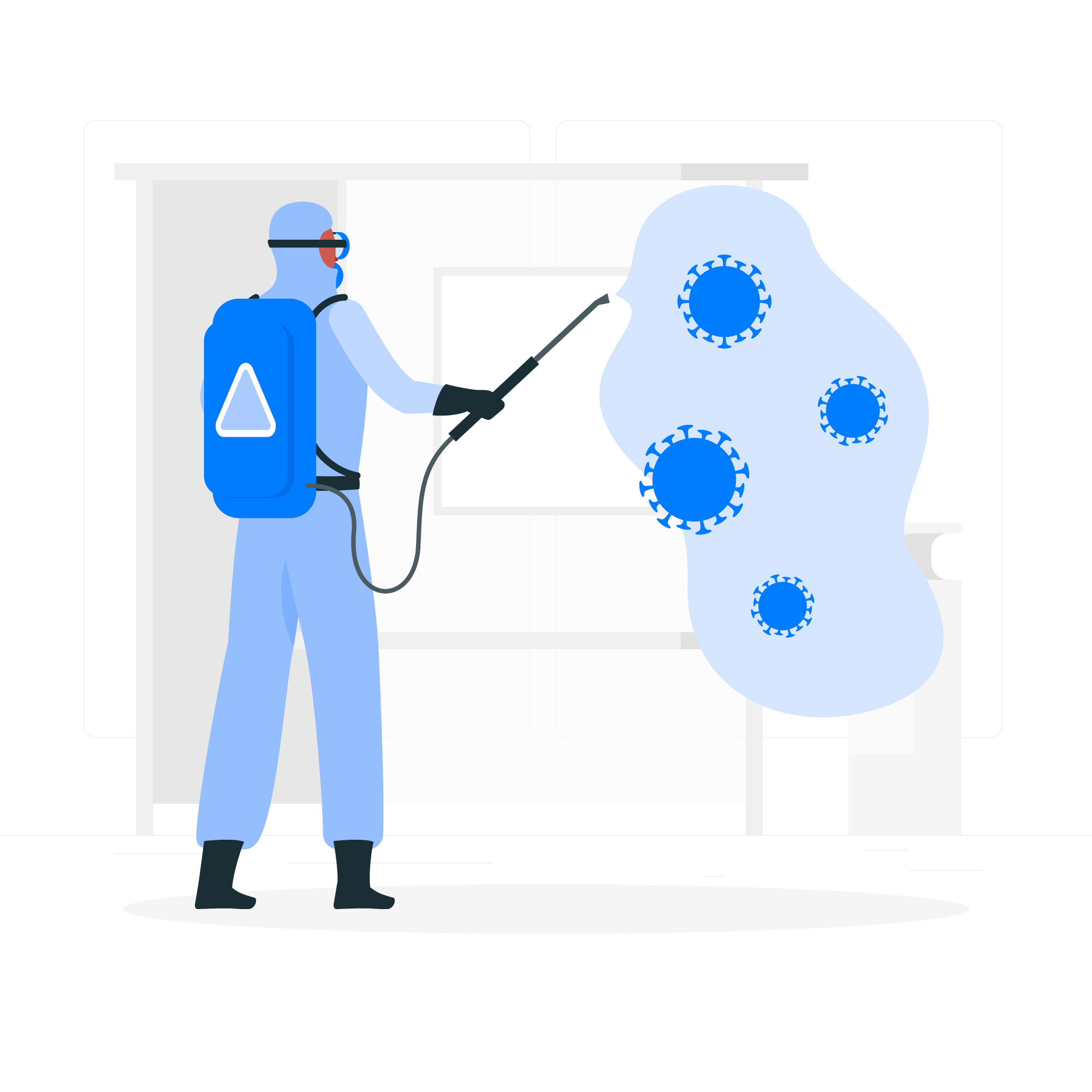Denver’s climate makes it prone to mold growth. With low humidity in the winter and sudden spring rains, excess moisture can accumulate in homes and cause mold infestations. Mold testing is an important step for Denver homeowners to ensure their health and home’s integrity. This in-depth guide covers why mold testing in Denver matters and how it works.
What is Mold and Why is it a Problem?
Mold is a type of fungus that grows in damp environments. While mold spores are present everywhere, they only grow out of control when excessive moisture allows them to proliferate.
Some common household molds include:
- Cladosporium – greenish-black and the most common indoor type
- Aspergillus – various colors and found in soil, plants, and carpet
- Penicillium – blue or green and causes food spoilage
Mold can be extremely detrimental for several reasons:
Health risks – Mold releases spores and mycotoxins that can cause allergic reactions or toxicity. Headaches, asthma attacks, respiratory issues, rashes, and sinus congestion are common effects. Prolonged exposure may lead to chronic illnesses.
Property damage – Mold can eat away at wood, drywall, and insulation. Once established, it’s very difficult to fully eliminate. Ongoing exposure leads to costly repairs.
Lower home value – Visible mold or a history of infestation makes a home less desirable. Homebuyers see mold problems as a major red flag.
Clearly, uncontrolled mold growth poses serious problems for Denver homeowners. Testing is the only way to identify if and where mold hazards exist.
How Mold Spreads in Denver Homes
Denver’s unique seasonal changes create the perfect environment for mold. Here’s how it typically happens:
- Winter – Low humidity inside houses dries out building materials. Gaps in walls, windows, and roofs allow outdoor air to penetrate and further dehydrate materials.
- Spring – Snow melts and rainfalls increase. Home exteriors get soaked while indoor air remains dry. This moisture gradient pulls dampness through exterior walls and foundations.
- Summer – Warm temperatures accelerate mold growth. Dark, damp areas like basements and crawl spaces become breeding grounds. Slow leaks behind walls or under floors provide steady moisture.
Many Denver homes see this pattern each year. Unless the moisture is controlled, mold takes hold and spreads. Testing is the only way to find hidden mold before major overgrowth.
Health Effects of Mold in Denver
Mold exposure causes a wide range of health effects. Denver’s high elevation and low humidity may even exacerbate problems.
Some common symptoms include:
- Chronic coughing or wheezing
- Runny nose and postnasal drip
- Eye, nose, and throat irritation
- Rashes or skin irritation
- Headaches or dizziness
- Fatigue and mood changes
Those with mold allergies or asthma are most severely impacted. Even generally healthy individuals can experience issues if exposure is heavy.
Toxic black mold like Stachybotrys chartarum releases mycotoxins that actually poison the body. Very dangerous organic compounds enter the air that impact the nervous system, lungs, and kidneys.
Children and elderly individuals face greater risks. Extended exposure could lead to respiratory infections, declining cognitive function, or other chronic diseases. Anyone with a suppressed immune system is also highly vulnerable.
Clearly, lingering mold problems place great strain on health. Testing allows Denver homeowners to locate hazards before major illness occurs.
Signs of Mold in Denver Homes
Some signs clearly indicate mold’s presence. Being aware and conducting regular inspections helps catch issues early.
Noticeable growth – Dark spots on walls, under sinks, or in other damp areas may be mold colonies. Look closely for fuzzy or slimy patches.
Musty odors – Stale, earthy smells often emanate from mold infestations. Basements, crawl spaces, and bathrooms are common sources.
Allergic reactions – Sniffling, coughing, irritated eyes, and headaches after entering certain rooms could signal mold. Track if symptoms worsen in the home versus outside.
Moisture – Visible dampness, water stains, or plumbing leaks provide ideal conditions for mold. High indoor humidity above 55% also fosters growth.
Property damage – Bubbling paint, warped wood, and cracking drywall may result from mold behind walls. Discoloration along baseboards is another indicator.
Don’t ignore these red flags. Testing is the best next step to locate the source and extent of growth.
Dangers of Mold in Denver Basements
Basements require extra vigilance. As the lowest, most enclosed areas of homes, basements are prone to dampness and severe mold infestations.
In Denver, basements face additional risk factors:
- Low humidity – Colorado’s dry climate pulls moisture through basement walls and floors. Even sealed concrete is not totally impervious.
- Flash floods – Heavy spring rains can overload gutters and soak basement walls. Denver sees multiple flash flood events annually.
- Older homes – Many Denver houses are over 50 years old with deteriorating drainage and pipe systems. Slow leaks create perfect mold conditions.
- Poor ventilation – Enclosed basement spaces lack airflow. Moisture lingers and allows mold colonies to thrive.
These issues make basements hazardous for mold. Allergens and toxins can enter living areas through ductwork, pipes, and stairs. Testing helps locate hidden growth before it impacts health.
How Mold Spreads to Upper Levels
Don’t assume upper levels are immune if basement mold exists. Mold often makes its way through homes in invisible ways:
HVAC systems – Spores get sucked into ductwork and dispersed through vents. Air filtration only catches larger particles.
Along wires/pipes – Mold grows in the gaps around wires and pipes running vertical through walls. Spores travel up into ceiling spaces and fixtures.
Tracked upstairs – Shoes and clothing pick up spores in basements that then get deposited upstairs. Pets can also spread mold throughout the home.
Through walls – With enough moisture, molds grow inside walls and spread upwards seeking more water. Attics with roof leaks are also vulnerable.
Once upstairs, spores propagate in carpets, furniture, and drapes. Upper story infestations often trace back to an untreated basement mold problem. Testing both levels is key.
Should I Test for Mold on My Own?
DIY mold testing kits are available at hardware stores for as little as $10 to $50. But using them effectively takes skill and diligence for accurate, useful results.
Considerations for self-testing:
- Kits measure air quality for spores, but don’t locate mold growth. You only get part of the picture.
- Samples easily get contaminated and results skewed. For example, just opening a kit indoors contaminates the plate.
- You must know the optimal locations to place tests throughout the home. Missing problem spots gives false assurance.
- Proper lab analysis requires expertise and equipment. DIY tests use simplified color comparisons prone to misinterpretation.
- If using swabs, you must collect and handle samples in very specific ways to avoid contamination.
While DIY kits are better than nothing, they have significant limitations. The best option is to hire a trained professional for proper, comprehensive mold testing.
Hiring a Denver Mold Inspection Company
To locate hazardous mold and get a full understanding of its type and extent, utilize a professional mold inspector. Here’s how they ensure accurate, useful testing:
Detailed inspection – They examine the entire home searching for damp areas, property damage, and noticeable growth. Conditions conducive to mold are identified.
Air testing – High-volume pumps and petri dishes are used to sample airborne spore amounts. Samples are sent to a lab for microscopic analysis by experts.
Surface testing – Swabs of walls, vents, and suspect surfaces pinpoint actual mold colonies. Lab tests identify the specific species.
Moisture readings – Infrared cameras and moisture meters map water intrusion points. Problem areas can be fixed before mold takes hold.
Full report – You receive documentation detailing all inspection findings and laboratory results. Areas for remediation are outlined as well as mold type and toxicity.
This professional approach provides a complete picture of any mold hazards. You gain peace of mind knowing your family’s health is protected.
What to Expect During Mold Testing
A proper mold inspection involves thorough air and surface sampling. Here are typical steps:
Questionnaire – The inspector will first ask about any mold signs you’ve noticed and health issues. This helps target potential problem areas.
Walk through – All accessible rooms are visually examined for moisture issues, property damage, visible mold, and musty odors.
Air testing – Air pumps run for a period of time with petri dishes open to capture mold spores floating throughout areas of concern.
Surface sampling – The inspector swabs suspect surfaces and carefully seals samples to send to the lab for analysis.
Moisture scan – A thermal camera and moisture meter are used to map moisture hiding within walls. Temperature differences pinpoint intrusion areas.
Report results – Your full findings are provided detailing mold type, locations, concentrations, moisture issues, and remediation recommendations.
Proper mold testing takes 2 to 4 hours for a typical home. The detailed data helps create a remediation plan targeting all affected areas.
Interpreting Your Mold Inspection Report
Mold testing provides a wealth of valuable data. Properly interpreting your inspection report ensures you understand the full implications.
- Total spore counts – Higher numbers indicate greater levels of mold present, raising potential health risks. Outdoor samples should be lower than indoor.
- Toxicity – Some of the most hazardous molds belong to the Stachybotrys and Aspergillus genera. Their presence merits serious concern.
- Location – Mold found in living areas and air supply ducts poses greater immediate risk than isolated basement growth. But basement mold can still spread.
- Moisture – Reports of high humidity, plumbing leaks, and thermal differences warrant urgent repairs to stop mold growth.
- Scope – Widespread growth throughout a home indicates a systemic moisture problem. However, even minor mold in problematic areas like HVAC systems is concerning.
Use your inspector as a resource when uncertain about implications. Their expertise helps prioritize remediation based on the degree of risk.
Next Steps After Mold Testing
Once testing confirms mold’s presence, taking proper corrective action is critical. Here are important next steps:
Stop moisture – Fix plumbing leaks right away. Improve ventilation and dehumidification. Divert rainwater and snowmelt from foundations. Mold can’t grow without moisture.
Clean or remove – Non-porous surfaces like metal and glass can simply be disinfected. But porous materials like drywall and insulation will likely need replacement to fully eliminate mold.
HVAC cleaning – If mold entered ductwork, the HVAC system requires deep cleaning and filter replacement to prevent continued circulation of spores.
Conduct repairs – Patch exterior cracks, improve grading, and remedy other factors that allow moisture intrusion. This prevents mold from recurring.
Follow up testing – After remediation, follow up tests help confirm mold removal and check if any new growth appears over time.
With hazardous mold, don’t delay taking action. Lingering spores will continue impacting indoor air quality and structural integrity.
Mold Myths and Truths
Despite mold’s risks, many misconceptions persist around testing and remediation. Learning the facts helps homeowners make smart decisions.
Myth: A small amount of mold is harmless
Truth: Even a minor mold problem should be fixed. Spores multiply and spread quickly. Any buildup can release allergens and toxins.
Myth: Bleach kills and removes mold
Truth: Bleach only removes surface color. The root material remains and will continue growing. Professional remediation is required.
Myth: Mold testing is unnecessary in visibly problem-free areas
Truth: Mold often grows unseen behind walls and under materials. Testing is the only way to identify hidden hazards.
Myth: DIY testing kits are adequate
Truth: Professional testing provides more locations, analysis methods, and interpretation expertise. Results are more reliable.
Myth: Mold can be permanently removed from porous materials
Truth: Once mold penetrates surfaces like drywall and insulation, replacement is the only way to fully eliminate it.
Stay vigilant and don’t let mold myths put your home at risk. Testing and professional remediation keep your family safe.
Protecting Your Family’s Health from Mold
In a city prone to dampness like Denver, being proactive against mold is crucial to protect what matters most – your family’s health and home.
Take these steps to guard against hazardous mold growth:
- Inspect regularly for leaks, moisture, and musty smells
- Control indoor humidity between 30% to 50%
- Fix plumbing issues immediately
- Improve exterior drainage and seal openings
- Clean bathrooms, basements, and other damp rooms thoroughly
- Have an HVAC professional clean ducts annually
- Consider installing a sump pump and dehumidifier
- Test indoor air quality every 3 years, especially if anyone has allergies/asthma
Don’t let mold fester. If signs appear, take action quickly. Mold Testing in Denver provides the information needed to secure your home from this toxic invader.
Conclusion
Mold should never be ignored. Its health and property damages warrant serious concern for Denver homeowners. Implementing preventative measures and promptly addressing any signs of growth are key. Always confirm your home’s mold status through professional testing.
Though an unseen threat, mold can degrade a home and endanger your family’s well being. Stay vigilant through regular inspections, moisture control, and air quality testing. Your family’s health and largest investment deserve this minimal effort. Don’t let mold gain the upper hand.





